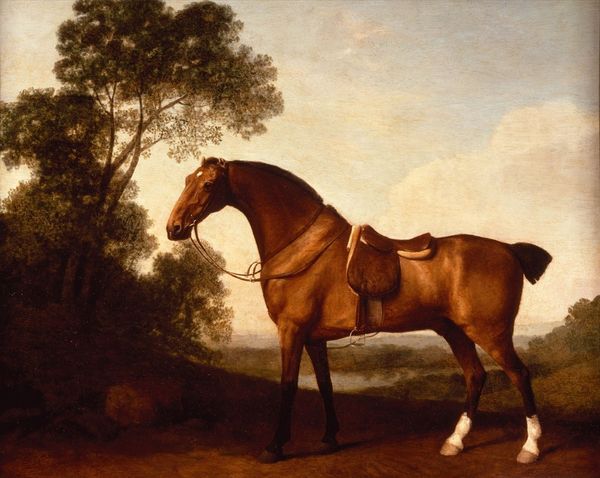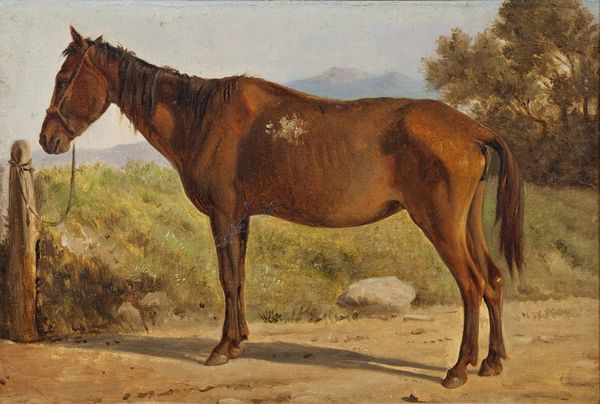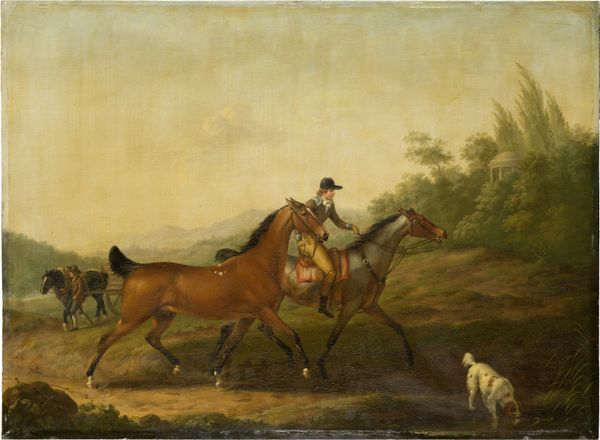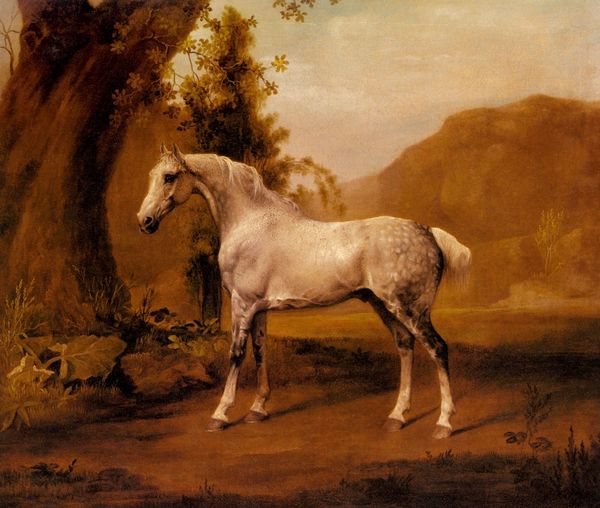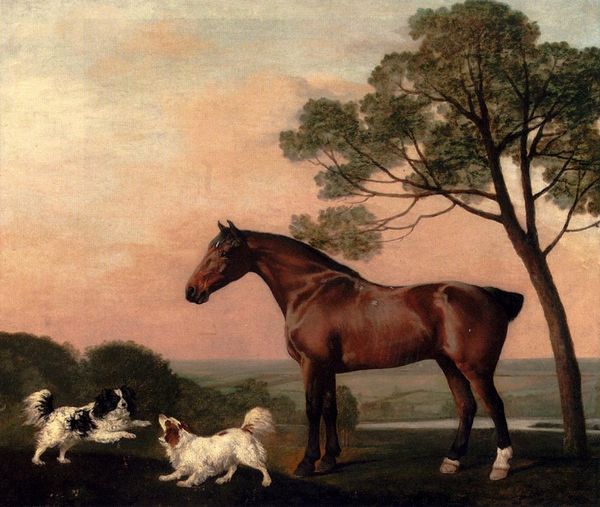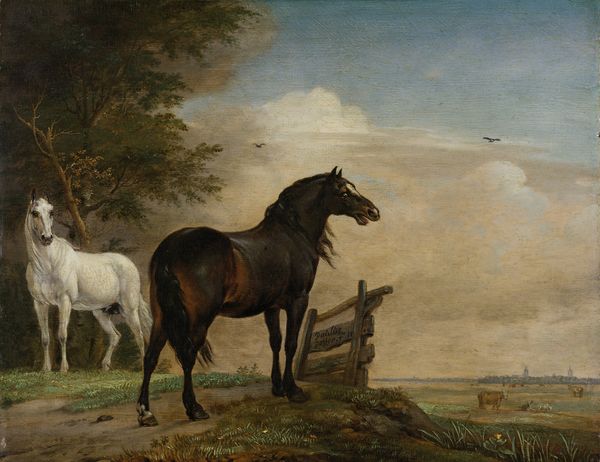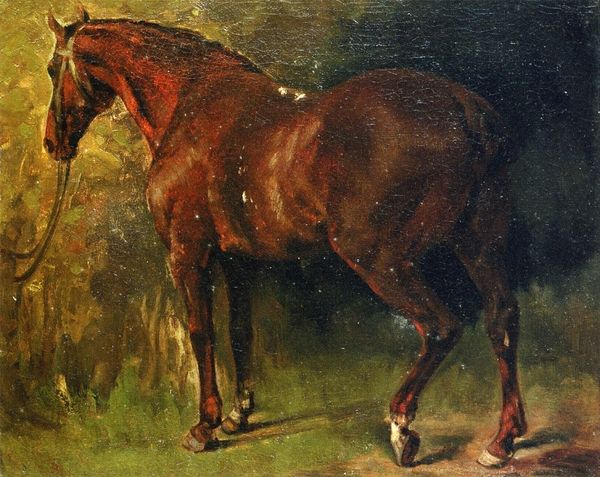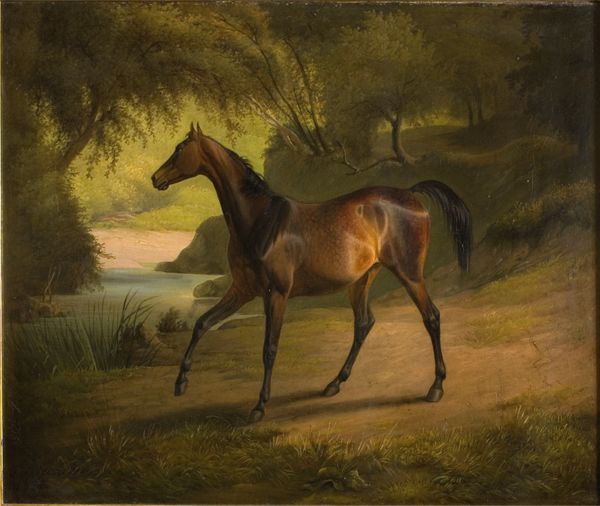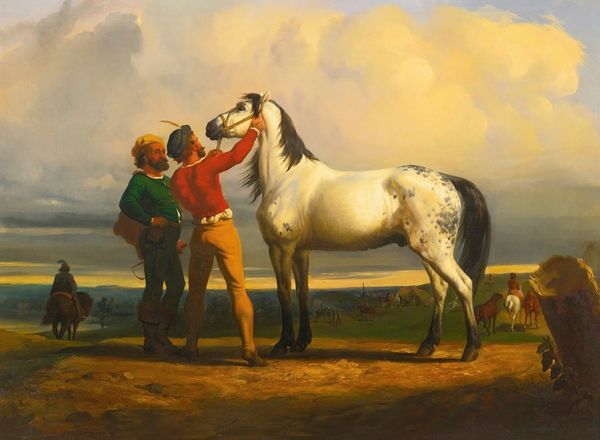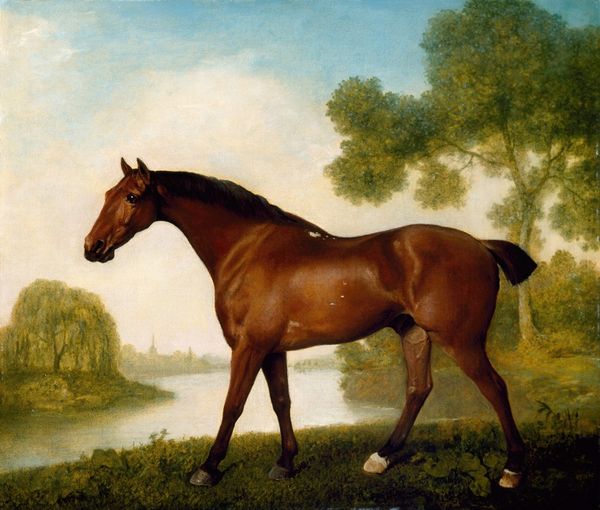
Dimensions: 40.64 x 61.6 cm
Copyright: Public domain
Editor: Here we have Albert Bierstadt’s "Portrait of a Horse," an oil painting from 1869. The way the horse is positioned so prominently in the foreground immediately strikes me. What can you tell me about it? Curator: Looking through a materialist lens, I see not just a horse but a complex interplay of materials and production shaped by social and economic forces. Observe the very *stuff* of this painting: the canvas, the pigments derived from earth and minerals, the oil that binds them. How do these materials themselves speak to the era's colonial expansion and resource extraction? Consider, too, the labour involved—the mining, refining, manufacturing, and the artistic skill—all embedded within this seemingly simple portrait. Editor: That's fascinating. I hadn’t considered the colonial context through the materials themselves. I was more focused on the romantic style and the implied narrative. Curator: Precisely! That Romanticism, as evident here with this picturesque representation, serves a purpose. Who would consume such an image? Why depict a horse so idyllically positioned near indigenous dwellings? The Hudson River School paintings romanticized the American West at a crucial point, inviting and justifying expansion and industrial exploitation of land and other raw materials, wasn’t it? It conveniently minimized the harsh realities. Editor: So, it’s not just about pretty landscapes but about the making and marketing of an idealized image connected to resource use and political agendas. I guess I'll never see such portraits the same way again. Curator: That's the goal. By questioning materials and production, we expose power dynamics and can unveil hidden narratives embedded within artworks.
Comments
No comments
Be the first to comment and join the conversation on the ultimate creative platform.
